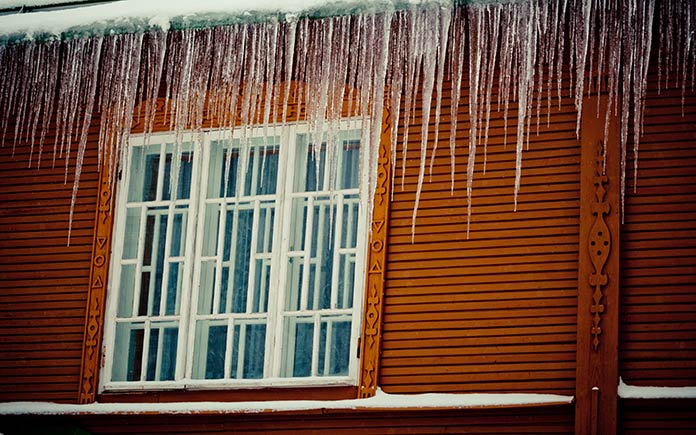
If you’re fortunate enough to live in the Sunbelt or some other balmy region, chances are you’ve never heard of — or at least experienced — ice dams.
I, on the other hand, live in New England, so every winter, ice dams are as common — and as welcoming — as frostbite and sub-zero temperatures.
That’s because ice dams can be problematic, destructive, and virtually impossible to remove once fully formed.

Ice Dams: Beautiful, But Problematic
Ironically, ice dams are often responsible for one of the most beautiful and iconoclastic of all winter images: glistening crystal-clear icicles hanging from gutters and eaves.
Heck, even I marvel at the delicate beauty of icicles — but only when they’re hanging off someone else’s house.
So, what causes ice dams?
It all starts with a roof blanketed in snow. The snow layer sitting directly on the roof begins to melt, and water runs down the roof under the blanket of snow.
When the water hits the overhanging eave of the house, it begins to freeze. Some water drains into the gutter, where it freezes as well.
As the snow continues to melt and water freezes at the eave, ice eventually builds up along the roof, forming a thick ridge or dam.
Then, as water runs down the roof, it’s blocked by the ice dam, and forced up the roof.
I know it seems to defy all laws of physics (and commonsense), but water will actually flow up the roof, working its way under the shingles.



